Look at the following C++ code
class Base1 {
public:
Base1();
virtual ~Base1();
virtual void speakClearly();
virtual Base1 *clone() const;
protected:
float data_Base1;
};
class Base2 {
public:
Base2();
virtual ~Base2();
virtual void mumble();
virtual Base2 *clone() const;
protected:
float data_Base2;
};
class Derived : public Base1, public Base2 {
public:
Derived();
virtual ~Derived();
virtual Derived *clone() const;
protected:
float data_Derived;
};
The 《Inside of C++ Object Model 》4.2 says that the virtual table layout of class Base1,Base2 and Derived is like this:


My question is :
The virtual table of the Base1 subObject of class Derived contains Base2::mumble.Why?I know Derived class shared this virtual table with Base1,so I think the function of Base2 should not appear here.Could someone tell me why? Thx.